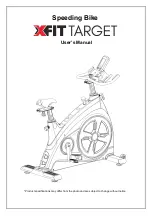
NEAX2400 IPX Feature Programming Manual
NDA-24297, Issue 1
Page 741
TIE Line Access
T-3
T-3 TIE
Line
Access
General Description
This feature allows any user dial access to a TIE Line.
Operating Procedure
1.
Lift the handset; receive dial tone.
2.
Dial the TIE LINE ACCESS code; receive dial tone from the distant PBX.
3.
Dial the desired extension number.
Service Conditions
1.
TIE LINE ACCESS may be denied to individual stations via CLASS OF SERVICE-INDIVIDUAL [C-
15].
2.
The PBX system is equipped with either automatic or dial-repeating TIE trunks.
3.
When a power failure occurs at the local NEAX2400 IPX (without reserve power backup), all TIE trunk
connections are lost.
4.
Each TIE Line group can be arranged for DP or DTMF address signaling incoming and/or outgoing.
5.
TOLL DENIAL [T-6]: The calling user is routed to reorder tone if an attempt is made to dial-access a call.
6.
The NEAX2400 IPX can be equipped with senderized TIE trunks. Immediate start, delay, or wink start
signaling is available.
7.
When a trunk group access code is dialed by a user, the TIE trunk group is used to index a trunk group
restriction table to determine if the call attempt is allowed. For each outgoing trunk group, the following
restriction options can be assigned per RSC:
a.) Indicates the TIE trunk is not allowed access to the trunk group dialed.
b.) Indicates the TIE trunk is allowed access (unrestricted).
c.) Indicates the station is allowed access but is restricted from making 0/1 toll calls or is code (3-
digit, 6-digit) restricted.
8.
Two outgoing trunk group restriction tables are provided per system. The Direct Dial Access table is
indexed when a user dials the trunk group access code and the ATTENDANT CONSOLE [A-3] table is
indexed on Attendant completed calls. The restriction options per RSC can differ per table, allowing
Attendant completion of outgoing calls for restricted stations.
9.
DTMF cannot be received on an incoming TIE Line call when the Signal Interface for Incoming route data
is set for Immediate Start.
Interactions
1.
For senderized TIE Lines, see UNIVERSAL SENDER
. The ANND command must be programmed
for Senderized TIE Lines (normally for 4(OGC)).
2.
If other services, such as STATION MESSAGE DETAIL RECORDING [S-10] and LEAST-COST
ROUTING-3/6 DIGIT [L-5] are to be used in conjunction with this feature, the AMND command must
be programmed. Go to the ASTP and AOSP command, if digit translation is required.
3.
MISCELLANEOUS TRUNK RESTRICTION [M-3]: Restrictions to TIE trunks are determined by the
Route Service Class (RSC) assigned to the station.
Содержание NEAX2400 ICS
Страница 1: ...OCTOBER 2000 NEC America Inc NDA 24297 ISSUE 1 STOCK 200775 Feature Programming Manual ...
Страница 43: ...NEAX2400 IPX Feature Programming Manual Page xxvi NDA 24297 Issue 1 This page is for your notes ...
Страница 690: ...NEAX2400 IPX Feature Programming Manual NDA 24297 Issue 1 Page 647 Splitting S 4 Programming No programming is required ...
Страница 1089: ...NEAX2400 IPX Feature Programming Manual Page 1046 NDA 24297 Issue 1 This page is for your notes ...
















































